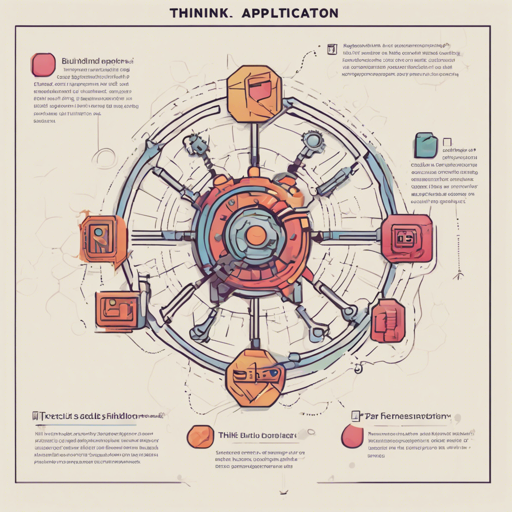Are you ready to embark on your journey to create a powerful application using ThinkJS? In this guide, we will walk you through the essential steps for setting up and running your ThinkJS application with a focus on configuration, database interaction, and user management. Whether you are a novice or an experienced developer, this guide is designed to be user-friendly and informative.
1. Installing ThinkJS
The first step to using ThinkJS is installing the required command-line interface. Follow these steps to install ThinkJS:
- Open your terminal or command prompt.
- Run the command to install ThinkJS globally:
npm install -g think-clithinkjs -v2. Creating a New ThinkJS Project
After installing, let’s create a new ThinkJS project called `thinkjsPlus`. Use the following command:
thinkjs new thinkjsPlus --mode=module3. Project Structure Overview
Your new project will have a predefined structure, similar to a well-organized library:
- bootstrap – The starting point for your application.
- config – Contains configuration files including database settings.
- controller – Where you define the logic for handling your app’s requests.
- model – Where your data structure is defined, including interaction with the database.
- view – Contains your HTML templates for rendering content.
- static – Hold your CSS, images, and JavaScript files.
4. Running the Development Server
To kickstart development, you can run your ThinkJS application by executing:
node development.jsThis command launches your development server, allowing you to see your application in action.
5. Configuring MySQL Connection
Managing your database connection is crucial. In src/config/adapter.js, you’ll define your MySQL configuration:
exports.model = {
type: 'mysql',
common: {
logConnect: isDev,
logSql: isDev,
logger: msg => think.logger.info(msg),
},
mysql: {
handle: mysql,
database: 'thinkjsplus',
prefix: '',
encoding: 'utf8',
host: '127.0.0.1',
port: 3306,
user: 'root',
password: 'root',
dateStrings: true,
},
};Think of configuring MySQL as setting up your home’s security system. You need to ensure that the right people (credentials) have access to the right rooms (database). Each configuration detail helps keep things organized and secure.
6. Creating Controllers
Controllers handle the logic behind your web application’s features. For example, let’s create an admin controller:
const user = this.model('thinkjsplus_user');
const data = await user.select();
this.assign('title', data);
return this.display(); This snippet fetches user data and assigns it to be displayed. It’s like a librarian retrieving a book from the shelf to show to a reader.
7. Nunjucks and Rendering Views
Using Nunjucks template engine, you can render dynamic views:
this.assign('title', 'thinkjsplus!');
return this.display();8. Middleware for Pre-Processing
Middleware functions can run before your main functions. For example:
module.exports = class extends think.Controller {
async __before() {
if(this.ctx.controller === 'admin' && (this.ctx.action === 'index' || this.ctx.action === 'login')) {
// Admin actions
}
let userinfo = await this.session('userinfo');
if (!think.isEmpty(userinfo)) {
this.assign('userinfo', userinfo);
} else {
return this.redirect('admin/index');
}
}
};This is akin to the bouncer at a club checking IDs before letting people in.
9. CRUD Operations
Implementing CRUD (Create, Read, Update, Delete) operations is crucial for data management:
- Save Action: Handles creating or updating data.
- Delete Action: Handles removing data.
- List Action: Fetches and returns the data list.
Troubleshooting Instructions
If you encounter issues during your project setup and execution, consider the following troubleshooting steps:
- Ensure all dependencies are installed correctly using
npm install. - Check your database connection settings in adapter.js to ensure it matches your MySQL configuration.
- Make sure your server (e.g., Nginx) is configured properly to serve your ThinkJS application.
- Inspect log files for error messages that could guide you in debugging.
For more insights, updates, or to collaborate on AI development projects, stay connected with fxis.ai.
Conclusion
At fxis.ai, we believe that such advancements are crucial for the future of AI, as they enable more comprehensive and effective solutions. Our team is continually exploring new methodologies to push the envelope in artificial intelligence, ensuring that our clients benefit from the latest technological innovations.

